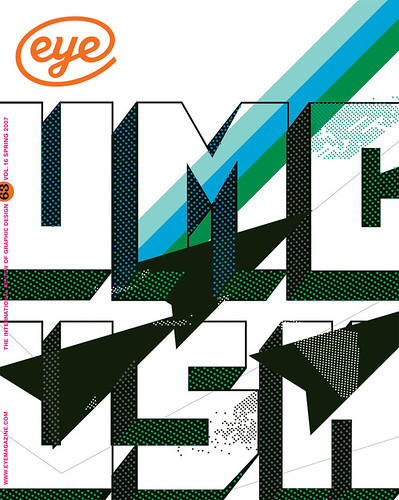Spring 2007
Humanity And Publicity
Max Huber
By Stanislaus von Moos, Mara Campana and Giampiero Bosoni.<br>Phaidon, £45<br><br>Design by Hans Dieter Reichert.This handsome and well illustrated monograph is the latest in a sequence of studies of major graphic designers of the postwar period published by Phaidon. The opening book was Steven Heller’s Paul Rand (1998), and a spate of titles appeared late last year, including Kerry William Purcell’s Josef Müller-Brockmann and Markus Rathgeb’s Otl Aicher (see review, page 83). These figures – who occupy central places in the surveys of graphic design history – certainly warrant this kind of monographic treatment. Collectively, they shaped the practice of graphic design in professional terms and brought a set of intellectual preoccupations to the business of arranging words and images for print.
Max Huber is a worthy member of this company. The career of this Swiss-born designer began in the orbit of the ascetic Max Bill and concrete art at the end of the 1930s, and matured during the reconstruction years, by which time Huber had relocated to Milan and was working within the encouraging atmosphere of the Studio Boggeri. His dynamic approach to type and bold use of colour ensured that – in broad terms – the values of the Central European Modernism of the inter-war years were still current at the end of his life in 1992. One of the most striking images in the book from Huber’s late career is, appropriately enough, a 1987 poster for an exhibition of the theatrical and artistic output of Bauhausler Oskar Schlemmer.
This book raises the question of how to write a study of the life and work of a designer that does justice to his contribution to graphic design and the contexts in which he worked. The historical importance of the field, situated at the intersection of art, politics and commerce, lies not just in terms of originality and creativity: it has the potential to tell us a good deal about the ways in which modern life has been shaped and contested. Moreover, writing about the history of graphic design – with honourable exceptions – has been bedevilled by disinclination to analyse. Many writers prefer the easy generalisations of style rather than undertake the challenge of interpretation.
The approach of Stanislaus von Moos and his colleagues might be described as ‘compartmentalised’. Huber’s output is organised into a series of portfolios. His publicity work in the sphere of culture is separated from his political output for left-wing organisations and from his commercial work for corporations such as Olivetti and 3M. These sets of images – expertly reproduced – are accompanied by three long essays: one explores the symbolism in Huber’s work; a second, plotting Huber’s career in Milan, focuses on his relationships with artists, designers and photographers as well as clients; and the third, on his exhibition designs, looks at what its author, Giampiero Bosoni, calls ‘archigraphic’ work.
The logic of compartmentalisation is, presumably, one of order: it is easier to grasp Huber’s achievements in different fields by separating them. But rather than separating different graphic products, one should ask: how can they be united? After all, they are the product of one imagination, albeit living and working in changing circumstances. As Von Moos argues in his essay, Huber believed that advertising could awaken in consumers an awareness of ordinary things as human work translated into form. This was a view of design that had great currency across Europe in the 1950s. It was a humanistic conception, which saw the benefits of design in its capacity to restore human values in the aftermath of war. Man, as many postwar philosophers from Sartre to Arendt noted, had been disordered and alienated by conflict: the challenge was his restoration.
Compartmentalisation produces other problems. Von Moos offers thought-provoking analyses of Huber’s imagery and draws imaginative lines between what might appear to be very diverse cultural phenomena. In a vivid and succinct art historical discussion of the symbol of the hand, for instance, the reader is asked to compare Huber’s work with images in Diderot’s eighteenth-century Encyclopédie. This kind of rich analysis is precisely what is required to turn the history of graphic design into intellectual history. But the problem here is that it is largely separated from the biographical discussion, which appears in a separate, rather pedestrian essay by Mara Campana. Von Moos’s analysis of his symbolic vocabulary floats away from the conditions in which Huber worked, while Campana’s biography remains rooted in factography. Ideas and life, designs and history are divided. If we want to have forms of graphic design history that are equal to their subjects, it seems to me that more synthesis is required.
David Crowley, design historian, London and Brighton
First published in Eye no. 63 vol. 16 2007
Eye is the world’s most beautiful and collectable graphic design journal, published quarterly for professional designers, students and anyone interested in critical, informed writing about graphic design and visual culture. It is available from all good design bookshops and online at the Eye shop, where you can buy subscriptions and single issues.

